Are you planning a trip and wondering when is the best time to visit New Zealand? Then you’re in luck! As a longtime resident of Aotearoa, I’ve experienced traveling around New Zealand in every season and in all kinds of weather.
The best time of the year to travel to New Zealand depends on several factors such as weather, crowds and seasonal activities. Plus, things like what you want to do while you’re here and what kind of experience you’d like to have.
This guide covers seasonal considerations and includes the best places to visit and activities to do for each to help you decide.
If you’re seeking warm weather, sunny beach days and water activities, the best time to visit New Zealand is between December and February. This is also peak travel season in New Zealand so be prepared for more crowds and higher costs.
Spring or Fall, from September to November and March to May respectively, are called ‘shoulder seasons’ and are a good time to visit New Zealand for fewer crowds and cooler temperatures, ideal for hiking.
The winter months of June to August attract a crowd to the ski areas, but is the quietest time for coastal areas and cities. You’ll often find better pricing for accommodation and activities, although it can be chilly and rainy in some areas and the days are shorter.
» Planning a trip to New Zealand? You might also be interested in our guide to travel insurance for New Zealand and our Christchurch to Queenstown Road Trip Itinerary.

» You might also like our 2-week North Island road trip and 2-week South Island itineraries to help you plan your trip. We also have a one-day itinerary for Auckland to get you started and travel guides for Queenstown and Milford Sound, two popular destinations in New Zealand. Be sure to check out our top New Zealand Travel Tips and guide to learning New Zealand slang if it’s your first time visiting.
Overview of New Zealand’s Climate
For a small country, New Zealand has a complex and varied climate due to its diverse topography. Locals often joke about experiencing four seasons in one day, and it’s true.
Mountain ranges running the length of New Zealand create micro-climates. The North Island is subtropical with milder temperatures, while the South Island tends to be cooler with more pronounced seasonal variations. Inland alpine regions can experience more extreme temperatures.
It’s what makes New Zealand so special. For example, you can be driving through a rainforest on the West Coast and within a couple of hours be standing near a glacier. You can experience the highest and lowest temperatures or the wettest and driest areas all within a short distance of each other.

Rainfall is generally spread throughout the year and keeps New Zealand lush and green year round. While it doesn’t rain all the time, it could rain at any time so best to pack a raincoat just in case.
In winter, snow mostly falls in the mountain areas of the Central North Island and the Southern Alps in the South Island in places such as Mt Cook, Wanaka and Queenstown, which are some of the best places to visit in New Zealand. Coastal areas and subtropical climates of the North Island and the West Coast of the South Island rarely get snow.
The coldest month is usually July and the warmest months are January and February. Average temperatures are warmer in the north and decrease as you travel south.
Overall, New Zealand’s climate offers a mix of temperate, subtropical, and alpine conditions, making it suitable for a wide range of outdoor activities and experiences throughout the year.
It can also be a challenge trying to figure out what to pack. Don’t worry, I’ve put together this comprehensive packing guide for New Zealand, complete with a printable packing checklist to help you navigate what to wear and pack for New Zealand’s diverse climates.
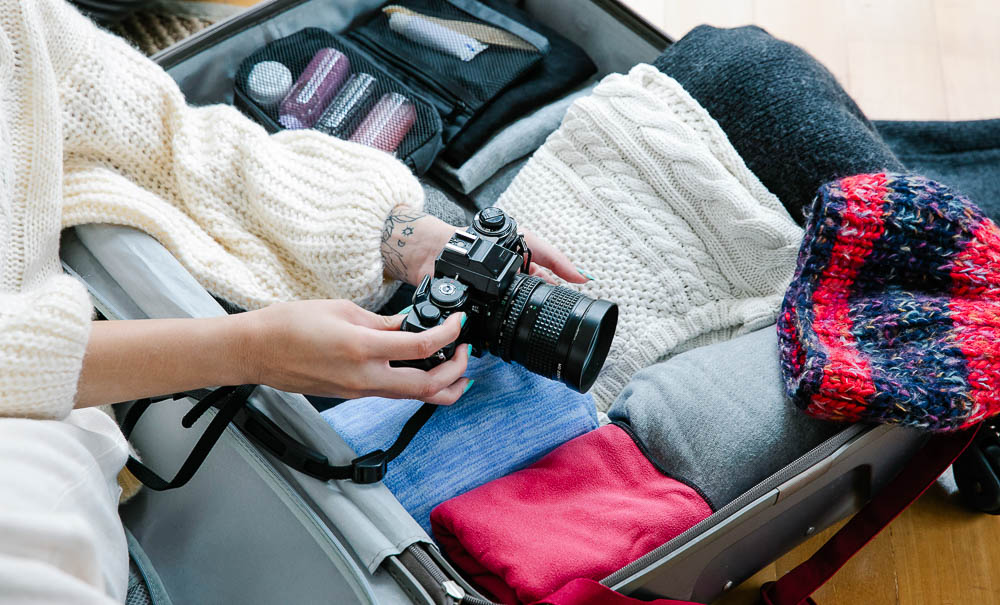
Best Time to Visit New Zealand
If you’re planning a trip to New Zealand, you want to make sure you visit during the best time of year right?
New Zealand is beautiful year-round, although things like the weather, cost of travel, number of people around and activities on offer vary depending on the season. The best time to visit depends on your preferences and interests.
Many visitors travel during the peak summer months, but many locals including myself will tell you that spring or autumn is the best time to visit.
Let’s take a look at what to expect for each season to help you decide when is the best time to go for YOU.
Here are a few things to think about as you read through:
- What are the top things you want to do while in New Zealand?
- Are they seasonal activities (e.g. beaches, skiing, hiking)?
- Do you enjoy hot sunny days?
- What about cold weather?
- Would you prefer to see spring blooms or fall foliage?
- Are you bothered by crowds?
- What is your budget?

Understanding New Zealand’s Seasons
Since we’re in the southern hemisphere, our seasons are the opposite of the northern hemisphere. This means Christmas marks the start of summer school holidays, hiking season runs from October to April and ski season from June to September/ early October.
Here is a snapshot of weather & seasonality in New Zealand.
| Warmest months | January, February |
| Coldest month | July |
| Driest months | January, February (Auckland, Wellington, Christchurch) February, July (Queenstown) |
| Months with most rainfall | June, July (Auckland, Wellington, Christchurch) December (Queenstown) |
| Best months for skiing | July, August |
| Sunniest places | Nelson, Marlborough |
| Wettest places | West Coast, Fiordland |
| Busiest months | December, January |
| Quietest month | May |
| School holidays | Dec-Jan (summer break) Mid-April (two weeks) Early July (two weeks) Early Oct (two weeks) |
Spring in New Zealand
Spring in New Zealand runs from September to November and is characterized by warmer days and landscapes dotted with colorful blooms and baby lambs.
Average daytime temperatures range from 16°C to 19°C (60°F to 66°F), with September being cooler and warming up as the season progresses. Expect a mixture of weather. Nights can be chilly and rain showers are possible. But hey, that’s all part of spring weather.
From October, the days become longer with daylight savings occurring on the last Sunday in September.
Spring is a unique time of the year when most activities are on offer. While it’s generally still too cool to swim, kayaking and white water rafting are popular activities. It’s the ideal time to enjoy hiking and outdoor adventures, and there is often spring skiing available at some of the ski fields.
Aside from school holidays which generally occur in the first two weeks of October, you’ll find fewer crowds during this season and relatively low prices for vehicle rentals and accommodation. Mid-October through November are my preferred months to travel in spring.
Visit New Zealand in spring if:
- You prefer mild temperatures
- Want fewer crowds
- Don’t mind a rainy day
- Plan to do a wide range of activities
- Want to see the landscapes in bloom
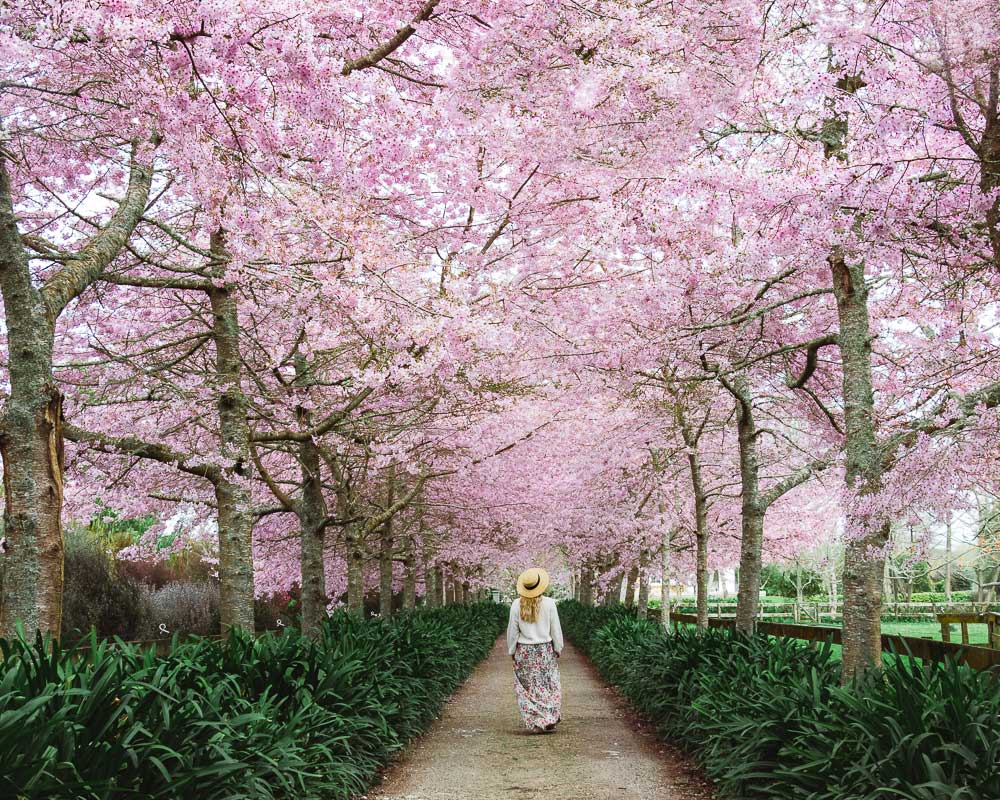
Best Places to Visit in Spring
Taranaki: With its iconic Mount Taranaki and beautiful gardens, it’s a great time of year to enjoy the colorful flowers and hiking trails.
Christchurch: Known as the “Garden City,” Christchurch offers stunning botanical gardens and parks that you’ll get to see in full bloom.
Wellington: Mid to late spring typically brings good weather to New Zealand’s capital city. Ride the cable car to the Botanic Gardens, visit Te Papa and enjoy al fresco dining at Queens Wharf.
Waikato: Spring is an ideal time to visit Waikato’s top attractions. Visit the Hamilton Gardens, take a tour of Hobbiton and enjoy the glowworm caves without the chill of winter but before the crowds of summer.
Lake Tekapo: A top destination to see lupins in bloom from late November. Although lupins are an invasive weed and harmful to the environment, they attract visitors from all over to photograph their colorful blooms. You’ll often find them around Lake Tekapo and along the road to Mt Cook.
Rotorua: Known for its geothermal attractions, Maori cultural experiences, and adventure activities such as mountain biking, ziplining, and exploring the geothermal parks and hot springs.

Best Activities for Spring
- Hiking and nature walks: Spring is an ideal time to explore New Zealand’s stunning landscapes, from lush forests to blooming meadows and alpine trails. Given its popularity, it’s worth noting that the Roys Peak Track is closed from 1 October to 10 November for lambing.
- Mountain biking: With the milder weather, spring is perfect for taking on New Zealand’s scenic MBT trails. Rotorua, Queenstown and Wanaka are just a few of the top spots for mountain biking.
- Adventure sports: From bungee jumping to ziplining, New Zealand offers a wide range of adrenaline-pumping activities that you can enjoy before the summer crowds and often reduced prices in spring.
- White water rafting: Spring is the best time for white water rafting and Rotorua is one of the best places in New Zealand to do it. The Kaituna River is especially popular and includes the highest commercially rafted waterfall in the world!
- Visiting gardens and parks: Spring brings an explosion of color to New Zealand’s gardens and parks. Hamilton Gardens, Wellington and Christchurch Botanic Gardens, and Queenstown Gardens are top contenders.
- Spring festivals: Many festivals take place during this season including the Auckland Diwali Festival (October), Wellington SpringFest (September) and the Taranaki Garden Festival (late October).

Summer in New Zealand
Summer runs from December to February and is considered the peak season in New Zealand. The warm temperatures combined with summer school holidays and high visitor numbers mean more people and higher prices.
Average daytime temperatures typically range from 20°C to 30°C (68°F to 86°F) in the North Island and slightly cooler temperatures in the South Island. While the weather can be quite pleasant, humidity can be high in some areas and there may be occasional rain and cooler spells, particularly in the southern regions.
The summer months have the longest daylight hours so you can make the most of your days. It’s the ideal time for outdoor activities, beach outings, water sports, camping and road trips. Kiwis are in holiday mode, beaches are pumping and jandals (flip-flops) are the footwear of choice.
Expect crowds and higher costs for things like accommodation and vehicle rentals. Popular attractions can sell out and the roads will be busier. Book as much as you can as early as you can to secure the best rates and availability.
Visit New Zealand in summer if:
- You don’t mind the crowds
- Prefer higher temperatures
- Want to enjoy the beaches and water activities
- Can book your hotels, vehicle rentals and attractions in advance
- Want the longest daylight hours

Best Places to Visit in Summer
Abel Tasman National Park: Known for its golden beaches, turquoise waters, and coastal hiking trails, offering opportunities for kayaking, camping, and wildlife encounters.
Paihia/Bay of Islands: A picturesque region with pristine beaches, marine reserves, and the historic Waitangi Treaty Grounds plus the chance to enjoy water-based activities such as sailing and dolphin watching or visit the historic town of Russell. .
Coromandel Peninsula: Famous for its stunning beaches, including Cathedral Cove and Hot Water Beach, where you can dig your own hot pool. There are also lush forests, hiking trails, and the relaxed atmosphere of coastal towns like Whitianga.
Fiordland National Park: Home to the iconic Milford Sound and Doubtful Sound, offering boat cruises, kayaking, and hiking amidst dramatic fiords, waterfalls, and snow-capped peaks.
Hawke’s Bay: A renowned wine region with art deco architecture, gourmet food experiences, and the opportunity to explore vineyards, orchards, and the scenic landscapes of Cape Kidnappers.
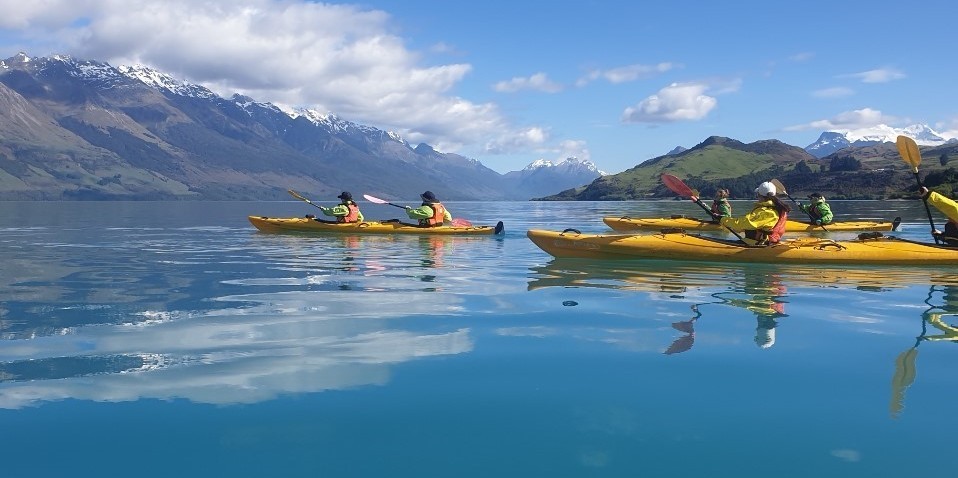
Best Activities for Summer
- Visit New Zealand’s beaches: Enjoy sunbathing, swimming, surfing, and water sports at the beautiful beaches, including Piha Beach, Cathedral Cove, Hot Water Beach and Mount Maunganui.
- Water Adventures: Go kayaking, sailing or SUP in locations like the Bay of Islands, Milford Sound, and the Coromandel Peninsula. Scuba Dive at Poor Knights or go snorkeling at Goat Island Marine Reserve.
- Hiking and Great Walks: Explore the country’s stunning landscapes on the numerous hiking trails or book one of New Zealand’s Great Walks, such as the Abel Tasman Coast Track, the Milford Track and the Routeburn Track.
- Wildlife Encounters: Observe New Zealand’s wildlife through experiences like whale watching in Kaikoura, dolphins in the Bay of Islands, penguins and fur seals in Dunedin/Otago Peninsula. Or visit wildlife reserves such as TiriTiri Matangi Island to see some of New Zealand’s rare native birds.
- Festivals: Summer is the season of festivals. Check out Splore Music Festival near Auckland (February), the World Buskers’ Festival in Christchurch (January), or the Lantern Festival in Auckland (February) to name a few.

Autumn in New Zealand
Autumn in New Zealand runs from March to May, and is my preferred time to travel around the country. The temperatures are pleasant and the crowds have left along with the higher prices.
Average daytime temperatures range from 17°C to 21°C (62°F to 70°F). Expect crisp mornings turning into warm sunny days. The weather is generally mild and pleasant. Temperatures start to drop from May and you may need additional warm layers. May is also the quietest month to visit New Zealand.
From around April, crowds start to die down (after the Easter holiday) and the landscape is transformed with vibrant hues of red, orange, and gold as the leaves change color, making it a visually stunning time to explore the outdoors. The is most prominent in areas of the South Island such as Arrowtown, Queenstown and Wanaka,
Autumn is an excellent season for hiking, as the weather is generally stable and the days are still relatively long. It’s also harvest season for vineyards and orchards, offering opportunities for wine tasting and enjoying the fresh produce at local markets.
Visit New Zealand in autumn if:
- You prefer less crowds
- Want comfortable temperatures for hiking and outdoor activities
- Are looking for a more relaxed holiday
- Are here for the vineyards and wine-tasting
- Want to photograph the fall foliage

Best Places to Visit in Autumn
Arrowtown: Known for its charming historic streets, picturesque autumn foliage, and the annual Arrowtown Autumn Festival in April to celebrate the season. Mid to late April is usually when the fall colors are at their peak.
Wanaka: A stunning lakeside town surrounded by mountains, offering breathtaking autumn landscapes, outdoor activities, and the famous Wanaka Tree, a popular photography spot.
Central Otago: Renowned for its vineyards which will be in full bloom, orchards, and scenic drives. Go wine tasting in Gibbston Valley, visit the orchards in Cromwell and walk, bike or take a 4-wheel drive tour to the historic gold mining settlement of Macetown.
Queenstown: A hub for adventure activities, with options for bungee jumping, skydiving, jet boating, and access to nearby hiking trails and scenic cruises on Lake Wakatipu.
Auckland: Although the fall colors aren’t as prominent as in other areas of the country, there are fewer crowds and the weather is generally drier than in winter and spring.
Marlborough: A prominent wine region of New Zealand and a top destination to enjoy the fall foliage while sampling some of New Zealand’s world-famous Sauvignon Blanc. Try the green-lipped mussels and enjoy a cruise in the sound.

Best Autumn Activities
- Cycling: The cooler weather and colorful landscapes is the perfect time to explore the cycle trails. The Queenstown Trail is a New Zealand Great Ride connecting Arrowtown, Lake Hayes and Gibbston Valley. Or the Lake Dunstan Trail which takes you through incredible scenery from Cromwell to Clyde.
- Wine Tasting: Visit the renowned vineyards and wineries in regions like Marlborough, Hawke’s Bay and Central Otago to sample world-class wines amidst the picturesque vineyards and autumnal scenery.
- Hiking and Nature Walks: Enjoy the cooler temperatures and quieter trails in national parks and conservation areas, such as the Tongariro Alpine Crossing, West Coast rainforests, and Fiordland. Early autumn is also a great time to hike Roys Peak in Wanaka or Ben Lomond in Queenstown.
- Harvest Festivals: Join local harvest festivals and farmers’ markets to sample fresh produce and artisanal foods. There’s the Arrowtown Autumn Festival (late April), the Hokitika Wildfoods Festival (early March) and the Waiheke Island Wine and Food Festival (late May).
- Photography: Central Otago including Cromwell, Arrowtown, Queenstown and Wanaka has some of the most prominent autumn landscapes to capture.

Winter in New Zealand
The New Zealand winter is from June to August. It’s the coldest time of year but varies between regions.
Average temperatures in the alpine areas of the South Island range from 0°C to 10°C (32°F to 50°F). In the North Island, winter is milder, with temperatures ranging from 5°C to 15°C (41°F to 59°F).
The mountains are open for skiing and snowboarding. While the weather can be chilly, it also offers crisp and clear days, although rainfall is generally higher in the North Island in winter.
Winter is a great time for exploring geothermal areas and the country’s hot springs. While you can see wildlife all year round, the winter months provide additional opportunities for observing migratory birds and marine mammals along the coast.
Prices are at their lowest and the roads are less busy. Although, if you plan on traveling around the South Island in winter you’ll need to carry and know how to fit snow chains to your vehicle in certain areas.
Visit New Zealand in winter if:
- You want to save money
- Prefer to avoid the crowds
- Are here for the winter snow sports
- Don’t mind colder temperatures and shorter days
- Want to photograph the Milky Way or the best chance to see the Aurora Australis (Southern Lights)

Best Places to Visit in Winter
Queenstown & Wanaka: Great all year round and a hub for winter sports and activities, offering access to world-class ski fields, snowboarding, and a vibrant winter atmosphere with winter festivals, après-ski events, and stunning alpine scenery.
Aoraki/Mt Cook National Park: Experience the winter landscapes of New Zealand’s highest peak, with opportunities for snowshoeing, glacier viewing, and stargazing in the Dark Sky Reserve.
Taupo and Tongariro National Park: Enjoy winter in the central North Island, with the chance to explore the Tongariro National Park without the crowds, go skiing or snowboarding at Mt Ruapehu and relax in geothermal hot springs in Taupo.
Christchurch and Canterbury: Explore the winter charm of Christchurch and its surrounding areas, including ski fields, hot pools, and the picturesque landscapes of the Canterbury region.
West Coast/Franz Josef: Winter is usually the driest season on the West Coast. Explore ancient rainforests, visit the glaciers, and drive along the stunning coastline. You’ll likely have the beaches and top attractions such as the Pancake Rocks and Hokitika Gorge almost to yourself.

Best Winter Activities
- Skiing and Snowboarding: Enjoy skiing and snowboarding at popular ski resorts such as Queenstown’s Coronet Peak and The Remarkables, Wanaka’s Cardrona and Treble Cone, and the North Island’s Mt Ruapehu. July and August are usually the best months for skiing.
- Stargazing: The Aoraki Mackenzie International Dark Sky Reserve located in the South Island is one of the best stargazing sites in the world, offering exceptionally clear and dark skies for observing the stars, planets, and the Milky Way. June and July are the best months for seeing and photographing the Milky Way.
- Glacier Heli-Hiking: Experience the unique opportunity to explore Franz Josef and Fox Glaciers through guided heli-hiking tours, offering a combination of scenic flights and glacier exploration.
- Thermal Hot Springs: Relax and unwind in natural thermal hot springs in Rotorua, Taupo, Hanmer Springs, and Lake Tekapo. A must-do winter experience!
- Scenic Flight: Take a scenic flight over snow-covered landscapes of the Southern Alps, glaciers, and fjords. Get an aerial view of the braided rivers and come face to face with the mighty Aoraki, New Zealand’s highest mountain peak.
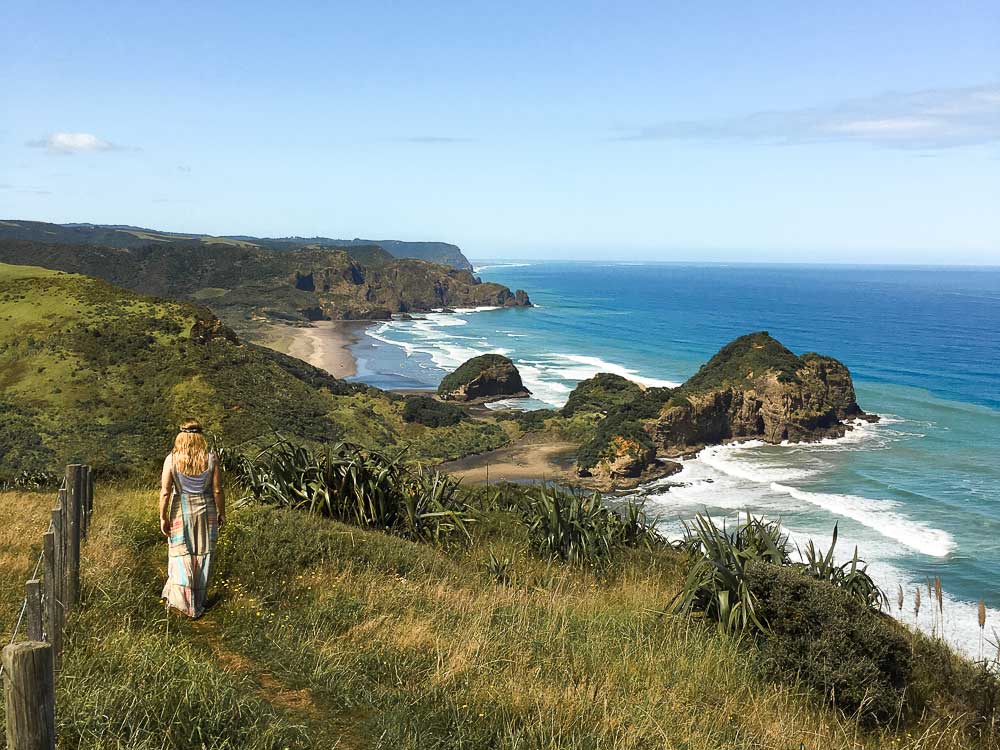
Summary of New Zealand’s Seasons
Average daytime temperatures according to the official New Zealand tourism website and the National Institute of Water and Atmospheric Research.
Spring: September, October, November
16°C to 19°C (60°F to 66°F)
Spring is the best time to visit New Zealand if you are looking for mild temperatures, fewer crowds, the biggest range of activities and don’t mind the occasional rainy day.
Summer: December, January, February
20°C to 30°C (68°F to 86°F)
Summer is the best time of the year to travel to New Zealand if you are looking for warm temperatures, long daylight hours and don’t mind the crowds. We recommend avoiding the Christmas and New Year period when prices are at a premium and most of the country is off from school/work.
Fall: March, April, May
17°C to 21°C (62°F to 70°F)
Fall is the best time to go to New Zealand if you prefer fewer crowds and cooler temperatures with relatively long days and stable weather, ideal for hiking and outdoor activities. April is my preferred month to travel around New Zealand.
Winter: June, July, August
0°C to 10°C (32°F to 50°F) in alpine areas
5°C to 15°C (41°F to 59°F) in the North Island
Winter is the best time to visit New Zealand if you don’t mind colder temperatures and are here for winter sports. Outside the ski areas, it’s a good time to visit if you want the least crowds and the lowest prices. Just bear in mind the days are shorter, some activities are closed for the season and if you plan on driving yourself around the South Island, you’ll need to be comfortable driving in alpine conditions that may include snow and ice.
Conclusion
Deciding when is the best time to visit New Zealand can be daunting, especially for first-time visitors. The good news is, there really isn’t a bad time to visit thanks to New Zealand’s relatively mild temperatures. It all boils down to your preferences and what you want to experience while you are here. I hope this guide helps you to narrow it down so you can start planning your perfect New Zealand adventure!
Travel Planning Guide
🚗 Where should I book my rental car?
Renting a car is one of the best ways to get around New Zealand. Public transportation can only get you so far, even in the cities. I always rent with Discover Cars, which checks the prices of all major rental car companies, so you get the best rates.
🚐 What about a campervan?
Renting a campervan is a fantastic way to experience the more remote areas of New Zealand. I really like JUCY because they have a big range of vehicles and locations around the country, which offers more flexibility with pick-up and drop-off. I also like Motorhome Republic, which compares all the campervan options available in NZ.
🎟 Where should I book my tours?
Tours are a great way to experience New Zealand’s top attractions while learning about the area and culture through local guides. We always use Viator and Get Your Guide to find the best tours.
🛏 What’s the best way to book my accommodations?
For hotels and vacation rentals, Booking.com or Expedia.com are the best sites. You can also book through TripAdvisor. If you’re considering renting a house instead, try VRBO which often has good deals.
🛩 What’s the best site to buy flights to New Zealand?
For finding the best deals on flights to New Zealand from around the world, I recommend Kayak.com.
Like this article? Save it on Pinterest so you can find it again.
FOLLOW US on Pinterest and Facebook for more New Zealand travel inspiration and tips!
YOU MIGHT ALSO LIKE
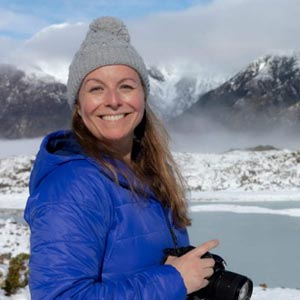
Heather is a travel enthusiast living in New Zealand with her family. She writes about living in and enjoying travel to New Zealand.




